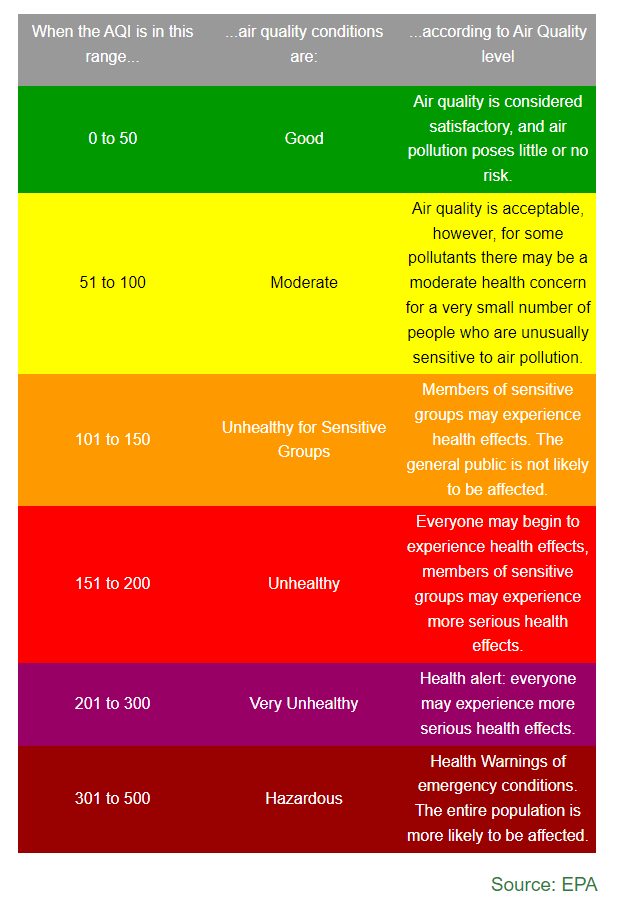There has been a lot of talk about air quality levels as nearly the entire tri-state area has been engulfed by smoke coming down from wildfires in Canada. But what do all the numbers actually mean?
The number that has been used most often is Air Quality Index (AQI), which reached "hazardous" levels on Wednesday. By 4 p.m. the AQI was at 413 for the city — historically high levels that haven't been seen in decades for NYC.
Here's a breakdown of the AQI levels:

The Hurricane season is on. Our meteorologists are ready. Sign up for the NBC 6 Weather newsletter to get the latest forecast in your inbox.
But what exactly do those numbers mean, where do they come from?
Simply put, the numbers show how clean or polluted the air is, or how many pollutants are present, according to the New York State Department of Environmental Conservation. While the numbers don't directly represent the number of pollutants in the air (for example, an AQI of 300 doesn't mean there are 300 pollutants in the air), the number is more of a yardstick to show pollution levels.
The higher the AQI value, the greater the level of air pollution and the greater the health concern, according to AirNow.
U.S. & World
"For each pollutant an AQI value of 100 generally corresponds to an ambient air concentration that equals the level of the short-term national ambient air quality standard for protection of public health," according to AirNow. "AQI values at or below 100 are generally thought of as satisfactory. When AQI values are above 100, air quality is unhealthy: at first for certain sensitive groups of people, then for everyone as AQI values get higher."
The scale goes from 0 to 500, with 500 being the worst. Considering NYC was approaching 400, it makes Wednesday one of the worst days for pollution the city has ever recorded.
For the last three years measured (2017, 2018, and 2019), New York’s AQI has remained less than 50, or in the "good" range.
The AQI measures five major air pollutants, according to AirNow. Those are:
- ground-level ozone
- particle pollution (also known as particulate matter, including PM2.5 and PM10 — this is what was causing Wednesday's historically high levels)
- carbon monoxide
- sulfur dioxide
- nitrogen dioxide
There are also measurements of fine particles, according to the city's site. To give an idea of just how bad the air is out there, NYC on average sits at 35 micrograms of fine particles per cubic meter of air every day. That number climbed to more than 350 by Tuesday evening (10 times the average) then skyrocketed to nearly 900 Thursday afternoon.
The fine particles are measured in PM2.5 (in µg/m3), which is a figure you may have seen used a lot lately. That's simply how the quantity of pollutants in the air can be determined and presented (PM stands for particulate matter).

So how exactly is breathing in the smoke bad for people? While this may sound like a ridiculous question to ask, it comes down to the particulates in the fire that can be very harmful.
Wildfire smoke releases fine particulate matter, called PM2.5, which enters the lungs and causes health issues such as asthma and bronchitis. PM2.5 concentration in New York City was 15 times the World Health Organization's annual air quality guideline value on Tuesday and Wednesday.
CNBC's Emma Newburger contributed to this report.



